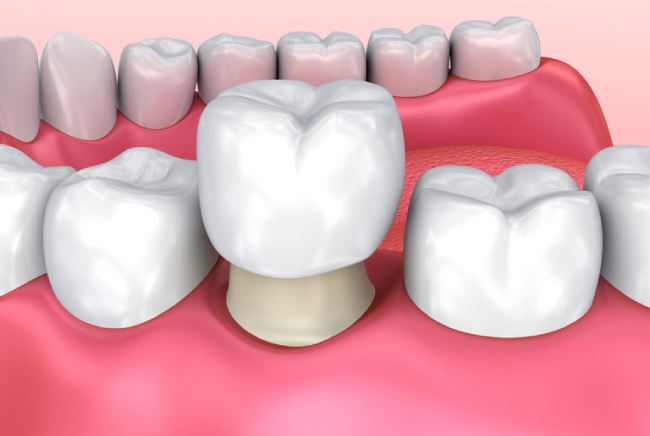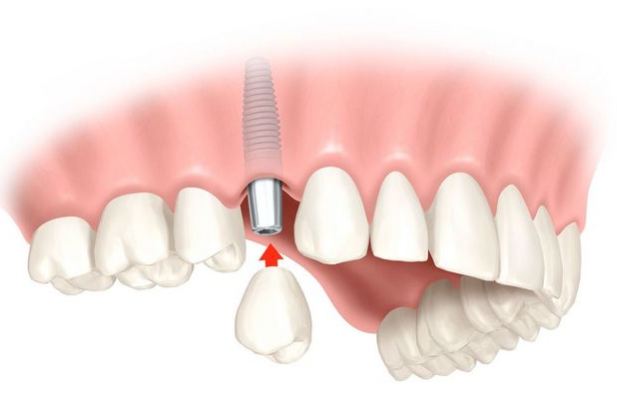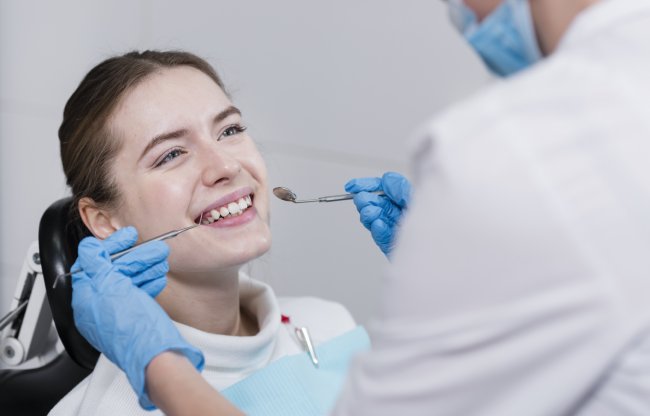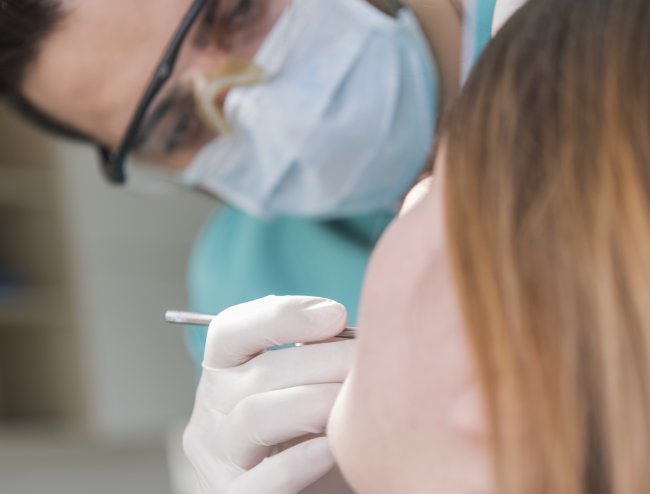Crowns for teeth

specialists

equipment

treatment
Types of dental crowns

Metal-ceramic dental crowns are highly durable due to their metal base. Ceramic coating provides aesthetic properties. The products are wear-resistant and suitable for all types of teeth.
All-ceramic onlays in dentistry are made entirely of ceramics, and therefore offer patients excellent biocompatibility and an attractive appearance. Great for front teeth due to their natural appearance.
Zirconium crowns also have high strength and the ability to imitate natural teeth. They are suitable for posterior and anterior teeth, providing durability and a natural appearance.
Metal plates, usually made from gold or other metal alloys, are known for their strength and durability. They are less aesthetically pleasing, but functional for chewing teeth.
It is recommended to place a dental crown on a molar when it is damaged by more than 70%. The prosthesis is made in laboratory and attached to the remaining part of the tooth using specialized dental adhesive. Crown allows you not only to restore the beauty of your smile, but also to restore chewing function and improve the quality speech.
We invite you to familiarize yourself with the main characteristics of crowns:
| Overlay type | Material | Service life | Prices | Appearance | Strength | Temperature sensitivity |
|---|---|---|---|---|---|---|
| Metal-ceramic | Metal frame + ceramics | 10-15 years | Medium | Good, but may fade over time | High | Minimum |
| All ceramic | Ceramics | 10-15 years | High | Excellent, natural color and shine | Medium | Minimum |
| Zirconium dioxide | Zirconium ceramics | 15-20 years | Above average | Excellent, closest to natural teeth | Very high | Minimum |
| Metal | Gold, platinum, stainless steel | 20-30 years | Low to high depending on metal | Medium, metallic luster | Very high | Minimum |
General information about the procedure
Answers to popular questions
Dentistry doctors “K+31” answered the most frequently asked questions about turnkey dental crowns
When is prosthetics with inlays and pins necessary?
What materials are used for crowns on chewing teeth?
What materials are used for crowns on the front teeth?
What care is needed for crowns?
What is the crown fixed to?
The crown requires reliable support because it must withstand the activities associated with biting, chewing and grinding food. This support is not limited only to the molar root within the bone. It is also necessary to have a protruding part above the gum, on which the crown will be installed.
Possible supports for fixing the dental onlay are:
- Root + remaining part of the tooth protruding above the gum
- Root + stump tab protruding above the gum
- Implant in bone + abutment protruding above the gum
The crown is fixed to the molar using cement or adhesive. If the crown is placed on an implant, it can be secured using a microscrew.
What should you do if you have a metallic taste in your mouth after a crown?

Modern methods of diagnostics and dental treatment at "K+31"

This award is given to clinics with the highest ratings according to user ratings, a large number of requests from this site, and in the absence of critical violations.

This award is given to clinics with the highest ratings according to user ratings. It means that the place is known, loved, and definitely worth visiting.

The ProDoctors portal collected 500 thousand reviews, compiled a rating of doctors based on them and awarded the best. We are proud that our doctors are among those awarded.
Make an appointment at a convenient time on the nearest date
Price
Other Services
Онлайн консультация стоматолога-ортопеда
Diagnosis and treatment of TMJ diseases Axiography of the TMJ Condylography of the TMJ MRI TMJ Splint therapy for TMJ Total dental rehabilitationOcclusion Analysis
Digital Smile Design (DSD) CEREC ceramic crowns, vineyards and deposits: 1 day manufacture and installation Boxing tire Ceramic veneers Composite veneers Veneers on the front teeth Nobel Biocare Implants























































What are dental crowns?